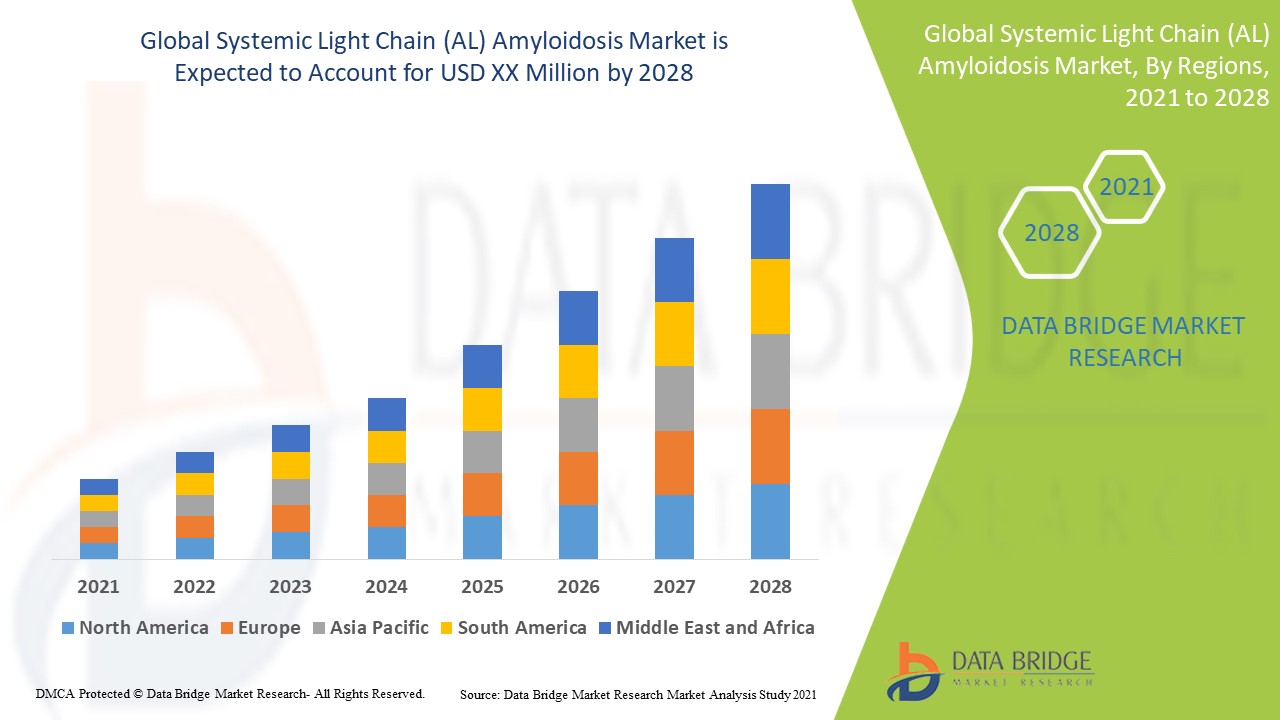Systemic Light Chain (AL) Amyloidosis Market: Advancements in Diagnosis and Treatment

Strong 8k brings an ultra-HD IPTV experience to your living room and your pocket.
Introduction
Systemic Light Chain (AL) Amyloidosis is a rare but potentially life-threatening condition characterized by the abnormal deposition of misfolded light chains (proteins) in various organs, including the heart, kidneys, liver, and nervous system. These deposits disrupt normal organ function and can lead to serious complications such as organ failure. Early detection and effective treatment are crucial for improving the prognosis and quality of life of affected patients.
The market for AL amyloidosis therapeutics is growing, driven by increasing awareness, advancements in diagnostic techniques, and the development of novel therapies that target the underlying cause of the disease. In this article, we will explore the current market landscape, key drivers, challenges, and future outlook for the AL amyloidosis treatment market.
Market Overview
The global market for AL amyloidosis therapeutics was valued at approximately USD 2.25 billion in recent years, with strong growth projections. By 2030, it is expected to reach over USD 4.5 billion, expanding at a compound annual growth rate (CAGR) of around 7-8%. This growth can be attributed to several factors, including the increasing number of diagnosed cases, the development of more effective treatment options, and the rising awareness of this rare disease.
The AL amyloidosis market is primarily focused on therapeutic treatments, including chemotherapy, proteasome inhibitors, monoclonal antibodies, stem cell transplants, and supportive therapies aimed at managing organ damage caused by amyloid deposits.
Key Market Drivers
1. Advancements in Treatment Options
One of the most significant drivers of growth in the AL amyloidosis market is the development of more targeted and effective treatments. Traditional treatments have included chemotherapy to reduce the production of abnormal light chains, but newer therapies, including monoclonal antibodies and proteasome inhibitors, are improving treatment outcomes. These therapies are designed to specifically target and reduce the production of amyloid-forming proteins, thus preventing further organ damage.
2. Increased Awareness and Improved Diagnosis
Historically, AL amyloidosis was underdiagnosed due to its rare nature and symptoms that overlap with other more common conditions. However, with advancements in diagnostic techniques—such as imaging, biopsy, and blood tests—there has been an increase in early detection. As awareness of the disease grows among healthcare providers, patients are being diagnosed more frequently and at earlier stages of the disease, which is positively influencing the demand for treatments.
3. Rising Incidence of Plasma Cell Disorders
AL amyloidosis is often associated with plasma cell disorders such as multiple myeloma. As the incidence of these related diseases rises globally, so too does the demand for AL amyloidosis therapies. The increasing prevalence of plasma cell-related conditions is expected to contribute significantly to the market’s growth over the coming years.
4. Aging Population
The global population is aging, and age is a known risk factor for the development of AL amyloidosis. With an increasing number of elderly individuals at higher risk, there is a corresponding increase in the potential patient population for AL amyloidosis treatments. This demographic shift is further driving market growth.
Treatment Landscape
AL amyloidosis treatment primarily focuses on reducing the production of amyloid proteins and managing the damage they cause to organs. The current treatment options include:
Chemotherapy: Chemotherapy remains one of the mainstays of AL amyloidosis treatment. It helps in reducing the production of amyloid-forming proteins by targeting plasma cells, which produce these abnormal light chains.
Proteasome Inhibitors: These drugs, such as bortezomib, help to inhibit the action of proteasomes, which are responsible for breaking down abnormal proteins in cells. By blocking this process, proteasome inhibitors prevent the accumulation of misfolded proteins that lead to amyloid deposits.
Monoclonal Antibodies: Drugs like daratumumab, which target specific proteins on plasma cells, are emerging as effective treatments for AL amyloidosis. These antibodies help to reduce the number of plasma cells that produce amyloid proteins.
Stem Cell Transplants: Autologous stem cell transplants are used in patients who are eligible and fit enough to undergo the procedure. This treatment aims to restore normal bone marrow function and halt the production of harmful amyloid proteins.
Supportive Therapies: Since AL amyloidosis often affects multiple organs, managing organ-specific complications is crucial. Supportive treatments may include medication to manage heart failure, dialysis for kidney issues, and other treatments to address symptoms such as neuropathy and gastrointestinal distress.
Regional Insights
North America: North America is the largest market for AL amyloidosis treatments, particularly due to the advanced healthcare infrastructure and higher rates of diagnosis in the United States and Canada. The presence of leading pharmaceutical companies and research institutions further supports this market’s growth.
Europe: Europe is also experiencing steady market growth due to increasing research funding, better disease awareness, and rising investments in healthcare. Countries like the United Kingdom, Germany, and France are witnessing significant advancements in the diagnosis and treatment of AL amyloidosis.
Asia-Pacific: In the Asia-Pacific region, the market is growing rapidly as awareness about the disease improves and healthcare access expands. Countries like Japan, China, and India are emerging as key players in the market, driven by rising healthcare standards and increased government initiatives in healthcare.
Challenges
Despite its growth, the AL amyloidosis market faces several challenges:
High Treatment Costs: The cost of advanced treatments, including proteasome inhibitors and monoclonal antibodies, can be prohibitively expensive for many patients. This is particularly true in lower-income regions, where healthcare access is limited.
Limited Awareness: While awareness has improved, AL amyloidosis is still underrecognized in some regions, leading to delays in diagnosis and treatment. This continues to be a major barrier to the effective management of the disease.
Complexity of Treatment: The multifaceted nature of AL amyloidosis and its treatment options requires a highly coordinated approach to patient care, which can be challenging for healthcare systems that are not well-equipped to handle rare diseases.
Source: https://www.databridgemarketresearch.com/reports/global-systemic-light-chain-al-amyloidosis-market
Future Outlook
The future of the AL amyloidosis market looks promising, with continued advances in treatment options and diagnostic technologies. The market is expected to experience significant growth, driven by:
The development of novel therapies that are more targeted and efficient in treating the disease.
Ongoing research into understanding the underlying mechanisms of amyloid deposits.
Expanding healthcare access and awareness, particularly in emerging economies.
Increased collaboration between pharmaceutical companies and healthcare providers to improve patient outcomes.
As treatment options become more effective and accessible, the prognosis for AL amyloidosis patients will continue to improve, paving the way for a brighter future for those affected by this rare and debilitating disease.
Note: IndiBlogHub features both user-submitted and editorial content. We do not verify third-party contributions. Read our Disclaimer and Privacy Policyfor details.





